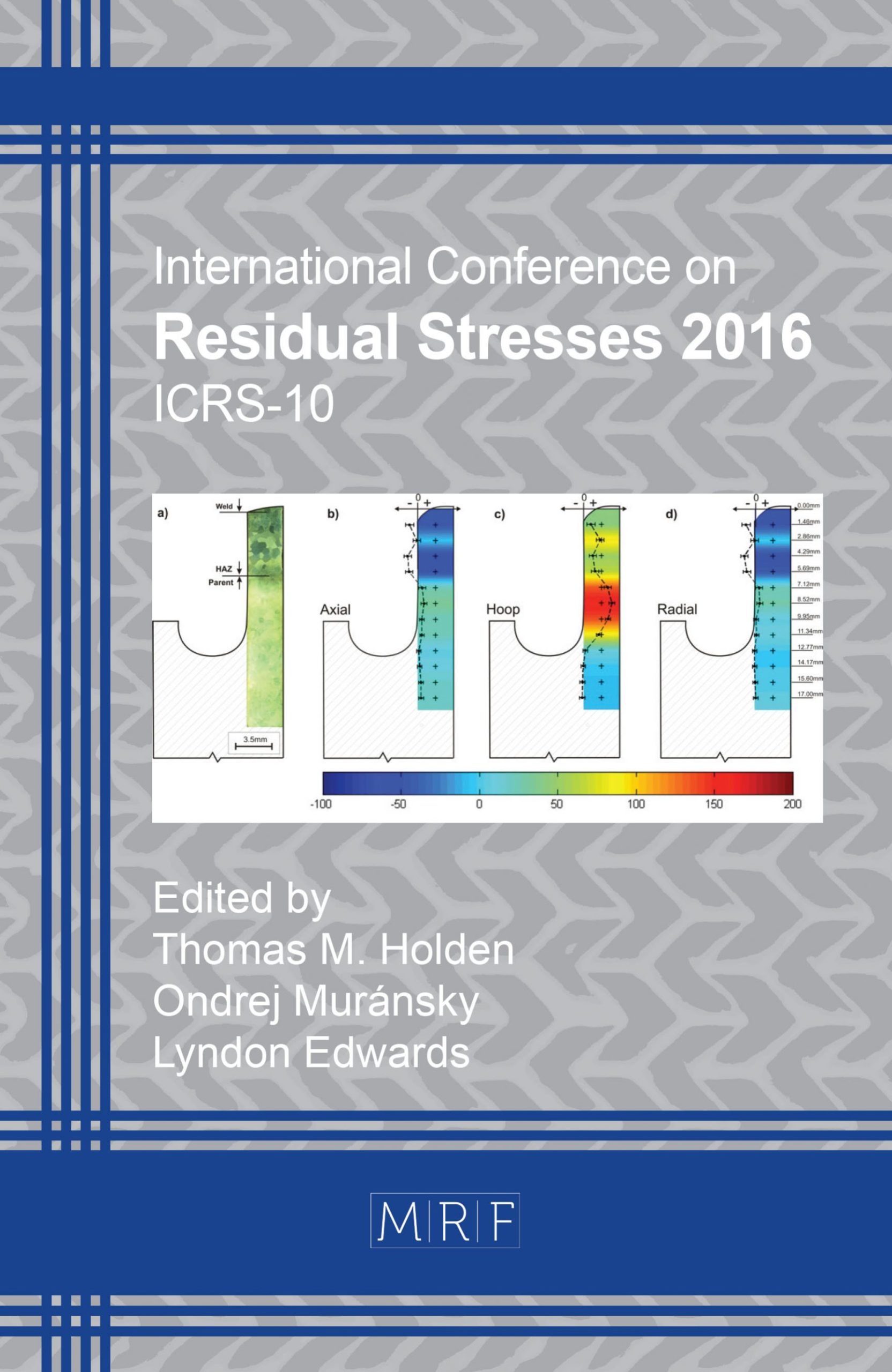Comparison of Residual Stress Measurement Techniques and Implementation Using X-Ray Diffraction
M. Belassel, J. Pineault, N. Caratanasov, M. Brauss
download PDFAbstract. Regardless of the particular residual stress (RS) measurement technique being used, all are based on the same basic principles when using x-ray diffraction (XRD). Every technique has both its advantages and disadvantages, many of which are well known to engineers and scientists however, some of the important “finer points” are unfortunately not widely discussed or known by those not well versed in the subject. This paper will try to bring to light many of these commonly misunderstood issues by comparing the different techniques and attempt to illuminate the associated problems a user may encounter when measurements become challenging i.e. when RS measurements are to be performed in tight grooves or on textured materials for example. In this study, different techniques including the: Cos technique, MET (used in Psi, Omega, or Modified Psi mode) have been evaluated and tested on a variety of materials and geometries.
Keywords
Residual Stress, X-Ray Diffraction, Measurement Technique, Geometry
Published online 12/22/2016, 6 pages
Copyright © 2016 by the author(s)
Published under license by Materials Research Forum LLC., Millersville PA, USA
Citation: M. Belassel, J. Pineault, N. Caratanasov, M. Brauss, ‘Comparison of Residual Stress Measurement Techniques and Implementation Using X-Ray Diffraction’, Materials Research Proceedings, Vol. 2, pp 43-48, 2017
DOI: http://dx.doi.org/10.21741/9781945291173-8
The article was published as article 8 of the book Residual Stresses 2016
![]() Content from this work may be used under the terms of the Creative Commons Attribution 3.0 licence. Any further distribution of this work must maintain attribution to the author(s) and the title of the work, journal citation and DOI.
Content from this work may be used under the terms of the Creative Commons Attribution 3.0 licence. Any further distribution of this work must maintain attribution to the author(s) and the title of the work, journal citation and DOI.
References
[1] LESTER, H. H., and ABORN, R. H. Behavior Under Stress of the Iron Crystals, Army Ordnance, v. 6, 1925, 1926, pp. 120, 200, 283, 364
[2] Noyan I.C. and Cohen J.B., ‘Residual Stress’, Springer Verlag, 1987.
http://dx.doi.org/10.1007/978-1-4613-9570-6
[3] J.A. Pineault, M. Belassel, M.E. Brauss, “X-Ray Diffraction Residual Stress Measurement in Failure Analysis”, Failure Analysis and Prevention, Vol. 11, ASM Metals Handbook, American Society for Metals, 2002, p. 484-497.
[4] V. Hauk, “Structural and Residual Stress Analysis by Nondestructive Methods”, Elsevier, Amsterdam, 1997.
[5] EN 15305, “Non-destructive Testing – Test Method for Residual Stress analysis by X-ray Diffraction”, August 2008.
[6] J. Lu et al., “Handbook of Measurement of Residual Stresses”, Published by the Fairmont Press, Inc., 1996.
[7] S. Tairaet al., “A Mehod of X-Ray Microbeam Measurement of Local Stress and its Application to Fatigue Crack Growth Problems”, J. Mat. Sci. Japan. 27, 1977, p.251-256.
[8] T. Kondoh et al., “X-Ray Stress Measurement for Titanium Aluminide Intermetallic Compound” Adv. In X-Ray Anal. Vol.43, 2000, p107-116.
[9] T. Sasaki et al., “Measurement of Macro- and Microstresses of Composite Materials by X-Ray Diffraction Method Using Imaging Plate”, ICDD Publications, Vol. 41,1999, p479-492.
































